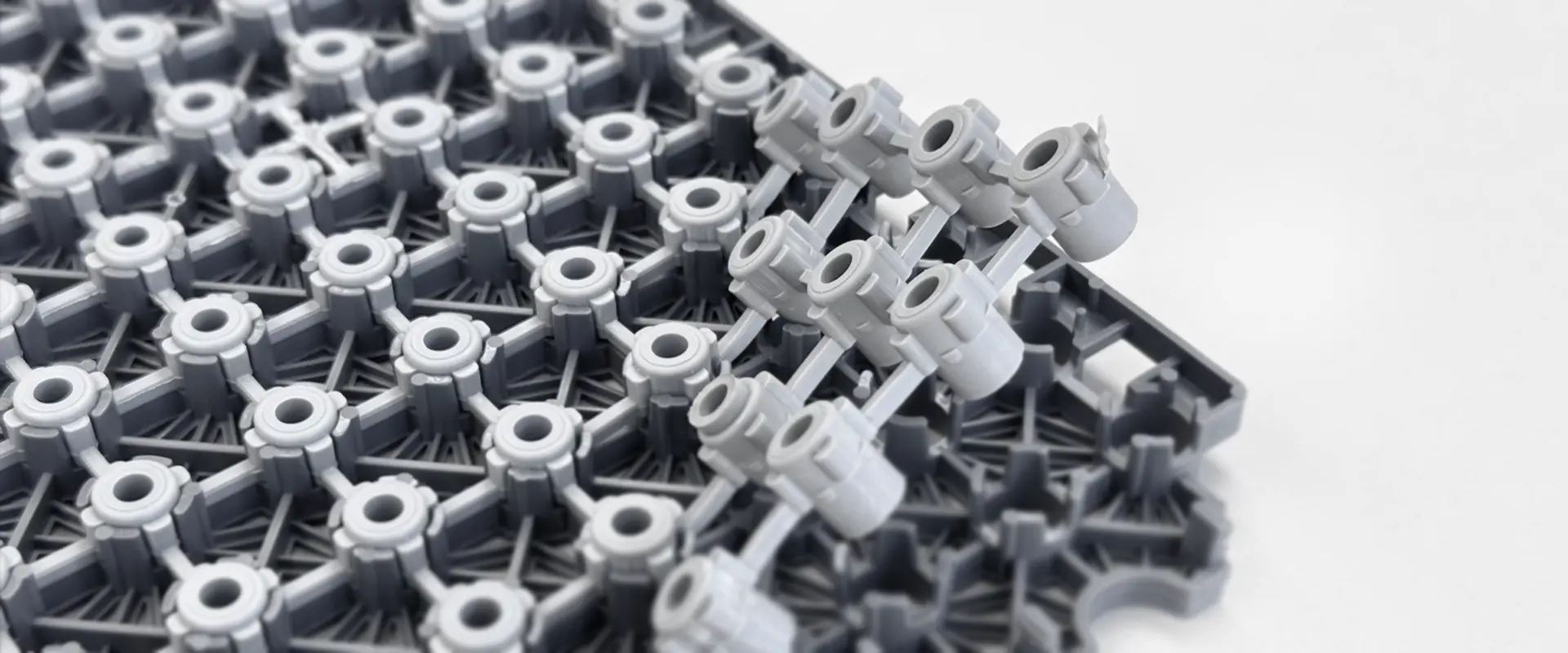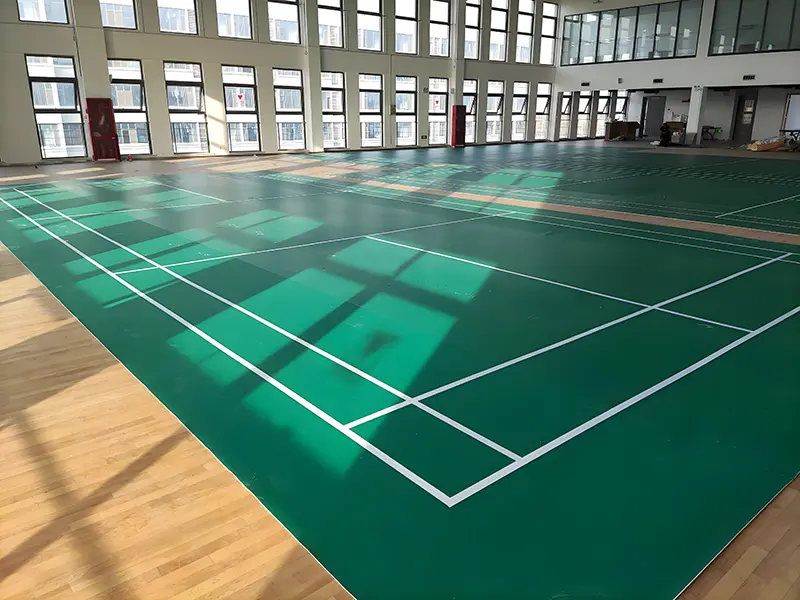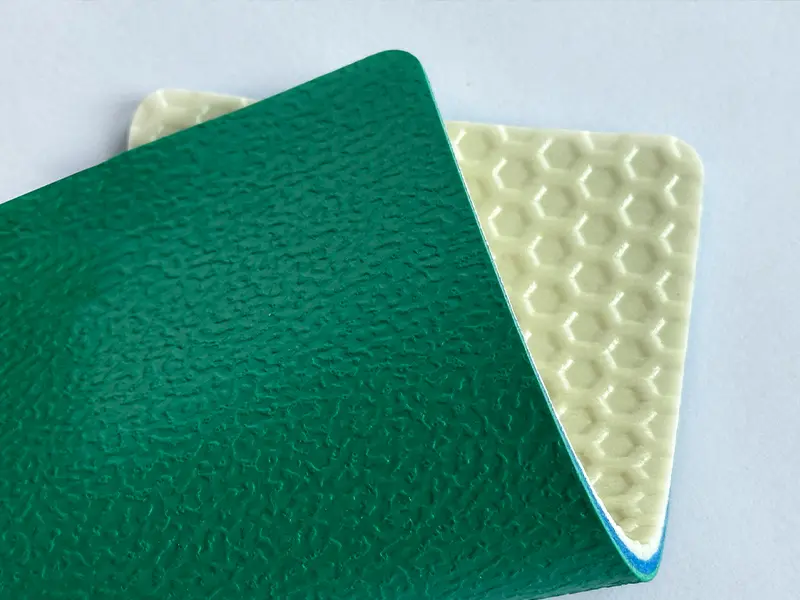Stable commitment to every leap, customized every flat
Blog


Stable commitment to every leap, customized every flat
Blog

Indoor badminton flooring materials are most commonly made from eco-friendly PVC. BWF-certified competition badminton court mat flooring also uses this material. Its performance must precisely match the characteristics of badminton (such as rapid starts and stops, high-frequency turns, and low impact damage), while also being durable, eco-friendly, and cost-effective.
As a China sport floor manufacturer, we offer various types of PVC badminton flooring to meet your different project construction requirements.

Type: Most commonly uses suspension-processed PVC resin (particle size 100-150μm). Compared to emulsion-processed resin, it offers more stable processing flowability and superior mechanical properties (tensile strength, impact resistance) after forming.
Characteristics: inherently rigid polymers that are hard and brittle at room temperature, requiring additives for flexibility; excellent chemical resistance (acid/alkali, oil resistance), but prone to decomposition at high temperatures (>80°C), necessitating the use of stabilizers.
Function: reduce intermolecular forces in PVC to impart flexibility and elasticity to the flooring.
Environmentally friendly plasticizers (e.g., epoxidized soybean oil, citric acid esters): non-toxic, good resistance to migration, a mainstream trend, and compliant with environmental standards such as REACH and GB 18586.
Addition ratio: Typically accounts for 30%-50% of the PVC resin. Excessive ratios may cause the flooring to become too soft (prone to deformation), while insufficient ratios may result in excessive hardness (insufficient elasticity).
Function: Prevent PVC from decomposing during processing (high temperatures) and use (light exposure, oxidation). Decomposition releases HCl, causing material discoloration and brittleness.

Types:
Calcium-zinc composite stabilizers (environmentally friendly): Replace traditional lead salt stabilizers, free from heavy metal contamination, with moderate thermal stability, suitable for indoor environments;
Organic tin stabilizers: Excellent thermal stability but higher cost, primarily used in high-end badminton court floor products.
Common calcium carbonate (heavy calcium/light calcium), added at 10%-20%;
Reduces raw material costs, improves processing flowability, reduces molding shrinkage, and ensures floor dimensional stability. Our process uses calcium-free foaming.
Surface wear layer: Typically transparent PVC film + UV-cured coating, or polyurethane (PUR) wear layer, thickness 0.1-0.3mm, providing wear resistance and anti-slip texture;
Cushion layer: Uses foamed PVC (with AC foaming agent) or EVA foamed layer, achieving shock absorption (impact absorption) through a closed-cell structure, thickness 2-5mm (affecting elasticity and cushioning performance).
Impact-resistant and wear-resistant, less prone to scratches or deformation from heavy objects or frequent movement, with a typical lifespan 3-5 years longer than wooden flooring.
Daily cleaning requires only simple wiping, no waxing or polishing; excellent waterproof and moisture-resistant properties, resistant to liquid penetration, avoiding issues like wooden flooring becoming damp and moldy.
Raw material costs and installation expenses are lower than solid wood flooring, and maintenance costs are minimal, resulting in lower total costs over the long term.
Good temperature resistance, suitable for humid, high-temperature, or environments with frequent air conditioning on/off cycles, while wooden flooring is prone to cracking and warping due to temperature and humidity changes.
Specialized sports PVC flooring offers anti-slip, shock-absorbing, and rebound properties to reduce sports injuries; it also offers a wide range of patterns and textures with high customization options.
Leave Your Message
Message us for free samples and quotes!